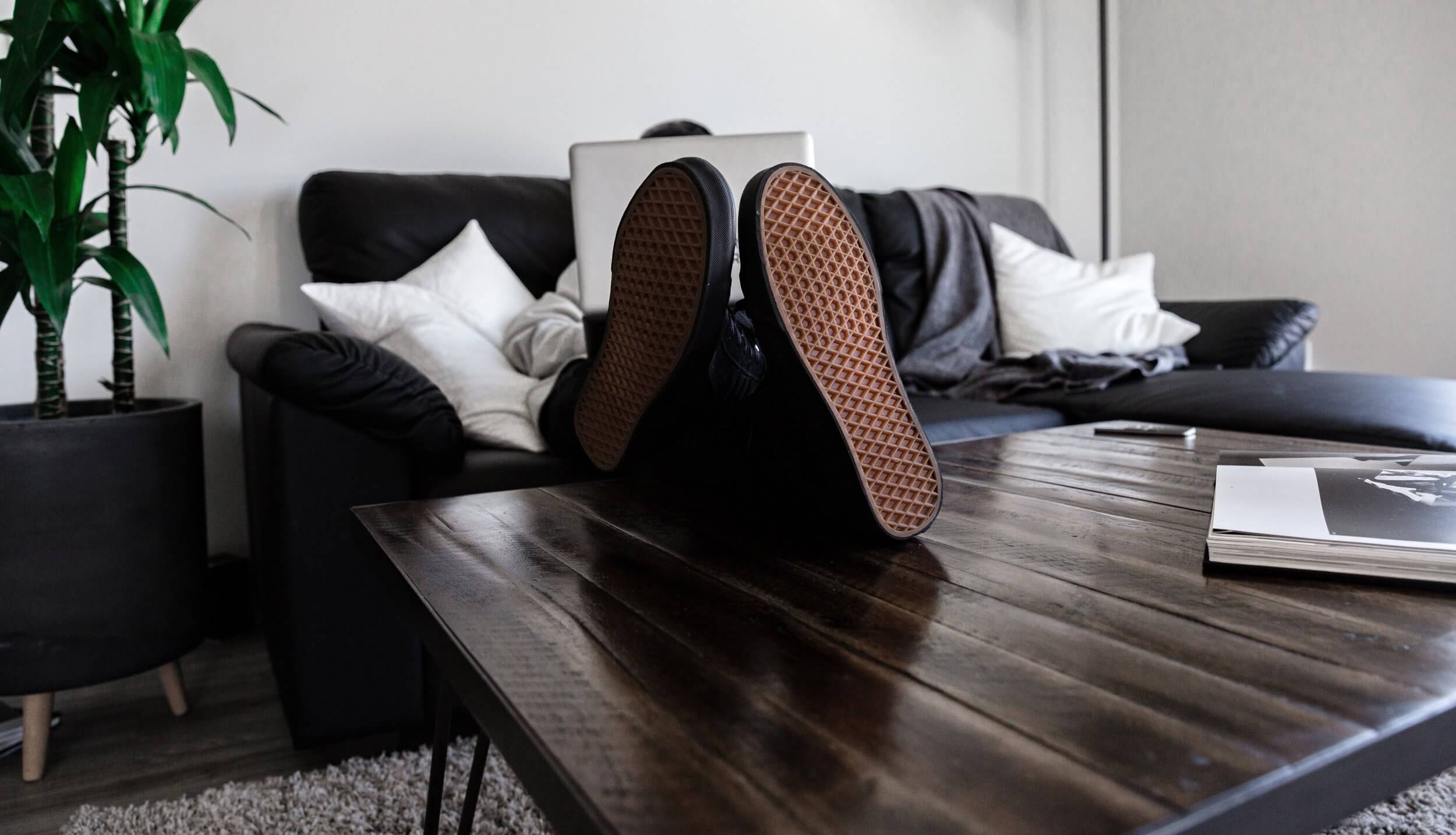
While working remotely is a dream for some people, our current COVID-19 situation has us working from home without the option to post up in a coffee shop, library, or co-working space. Feeling stuck inside or isolated from co-workers can be stressful and take a toll on our mental health.
Add to that the stress of waiting out the COVID-19 pandemic.
Worried about ourselves, our grandmas and our livelihoods…It’s a lot to process and to manage.
The Cacti are staying connected while working from home through chats and video calls. We’re still sharing happy hour together, lunching, and checking in. Along the way, we’ve been sharing the tips we’ve found for maintaining mental health and wellness during a time of sudden change and uncertainty. Here they are for you too:
Have a Designated Workspace. Make the most of your space by creating a desk area where you can come to work each day, even if it has to be your coffee table or your kitchen table. If you can, upgrade that workspace as much as possible. Stack up some books to elevate your external monitor, use an external keyboard, get some dope speakers for all the tunes you’ll be listening to (okay, and to hear your co-workers clearly during meetings), and make sure your desktop space is nice and wide for your elbows and wrists to have room and be supported.
Keep Your Routine. Get up, shower, exercise, eat, walk the dog, feed your children. Whatever your usual routine was, stick to it. Ditch those pajamas and get dressed for work. Keeping your routine will help with your own sense of going to work each day, and it can also help your family members maintain their routines. For parents, setting a schedule and posting it can be very helpful for communicating to your children when you are available and what they need to be doing too. Use a whiteboard or post up on your fridge, just be sure to keep that communication open and to hold those boundaries.
Stop at the End of the Day. Part of keeping a routine is also leaving work, which can be difficult when it is always home with you. You might end up feeling a need to hustle 24/7. Leave your laptop in that designated work area and don’t bring it to your nightstand. Allow yourself time to rest and recharge so you don’t burn out.
Eat Well. Routine again! Keep your lunchtime and snack time too. While you might not have the social aspects of walking by a co-worker’s desk on your way to lunch or when grabbing a snack, pause throughout your day to refuel. Also try packing your lunch, especially if that was part of your usual going into the office routine. Having a lunch ready for you can provide you with nourishment rather than merely rummaging through the fridge to fight off hunger.
Phone a Friend. Remember that loneliness is a state of mind, not a physical state. You can feel connected even while separated. The casualness of getting to work in an office together doesn’t always translate across messaging apps, so try video instead. Have lunch with a coworker or a friend who is also working from home. Plan a coffee break during which you leave your desk area and video chat while enjoying your beverage and the company of a co-worker or friend.
Stay Active. Though we are slowly moving towards ordinances to shelter in place across many cities, we’re still allowed to go outside. Spending time in the fresh air helps boost your mood. Even if it’s a few moments standing on your patio or by an open window, get outside as much as you can. Take a walk around the block or jog through the neighborhood. Staying active can help maintain your routine, give your brain a break from work time, and help you feel better. Even gentle exercise for only 20-30 minutes a day can help reduce anxiety.
Slow Down. With the housework that is. It can be tempting to mix in the household chores while working from home because you cannot escape them. Stick to that work routine and just say no to the dirty dishes. They’ll be there after that creative review meeting, ready and waiting once the scope of work is finished. Put the dishrag down. Maintaining your work time and home time boundaries while working from home can be difficult, but once you get your routine going, it’s easier on your brain and your mental wellbeing.
Use Your Home Office Co-Worker. Whether you have roommates or a partner, rely on each other. We’re all doing this suddenly-working-from-home thing together. We’ll have up moments and down moments and moments in between where we aren’t sure if we are up or down. Have compassion for each other, practice some patience, and lean on each other. If you have children, see if you and your partner can have designated times during which one of you is interruptible and the other is not to help support each other’s work. If you’re a total singleton and feeling particularly lonely, remember it is okay to be not okay! Phone a friend, drop a message to a co-worker and chat a bit. Take steps towards feeling connected.
Be Mindful. The top concerns that arise when working from home are depression and anxiety. Depression can appear as changes in eating or sleeping habits, a loss of interest in your work, or a lack of motivation to get it all done. You might also feel like you are stuck in your situation and that things will not improve. Anxiety can surface as fear of making mistakes, especially if working from home is new for your company and you have to learn to use new tools and new communication habits. You might experience compulsive behaviors or have obsessive thoughts. A morning or afternoon feeling these ways might happen, but if you continue to feel this way each day, try taking some time to practice mindfulness. Get away from your work for a moment to breathe, relax your brain, and focus on the sensations in your body. Allow yourself to be not okay for a moment.
Stay in Communication. If you aren’t used to doing all of your work over the internet, it can be a shock to your usual communication habits and routines. If you need additional communication, ask for it. If you might have a child, dog, spouse, or roommate make a cameo on a video call, let your co-workers know it might happen, and that you’ll press the mute button and handle the situation. And bring those habits home too; clearly communicate work schedules, times when you cannot be interrupted, or plans for the day and the week to your family members or housemates. Knowing what to expect and getting the clarity you need can greatly reduce anxiety.
Seek Help if Necessary. Bottom line, if working from home amidst a pandemic just is not working for you and your mental health is declining, don’t wait for it to get better on its own. Try virtual appointments, ask your employer about what mental health services are available through work, and get the help you need.
These uncertain times are unusual for us all and have plunged us into change whether we like it or not. It’s stressful! Hopefully these tips help you stay positive and carry you through our work from home times.
Even though we’re working from our homes while self-containing, we’re all in this together. Don’t forget that what you’re doing is saving lives and helping slow the spread of COVID-19.
Now go wash your hands, and be well.



